Overview
The article "9 Essential Tips for Those New to Wine: Start Your Journey Right" serves as a definitive guide for beginners embarking on their wine journey. It underscores the critical importance of:
- Grasping the various types of wine
- Mastering tasting techniques
- Ensuring proper storage
- Exploring food pairings
- Immersing oneself in wine culture through clubs and events
This comprehensive approach equips newcomers with the essential knowledge necessary to fully appreciate and enjoy the nuances of wine.
Introduction
Embarking on a journey into the world of wine is an exhilarating yet challenging endeavor for newcomers. With countless varieties, tasting techniques, and pairing possibilities, grasping the essentials can significantly amplify one’s appreciation and enjoyment. This article presents nine essential tips that will expertly guide beginners through their wine exploration—from mastering tasting methods to decoding labels and selecting the perfect pairings. Given the vast information available, how can one effectively navigate the complexities of wine to elevate their experience to new heights?
Enocap: Unlock Direct-to-Consumer Sales for Your Winery
Direct-to-consumer sales are essential for vineyards seeking to maximize their revenue potential. By engaging directly with customers, vineyards can forge stronger relationships, gather invaluable customer data, and enhance brand loyalty. Enocap specializes in empowering family-owned vineyards to establish robust DTC sales channels, ensuring they thrive in a competitive market.
Our comprehensive advisory services include:
- Demand generation strategies
- Club optimization
- Customer retention programs
These initiatives not only drive sales but also enable producers to craft compelling narratives that resonate with consumers, fostering deeper connections and driving loyalty. With proven strategies that have facilitated significant e-commerce growth for wineries, Enocap is committed to transforming casual visitors into loyal customers.
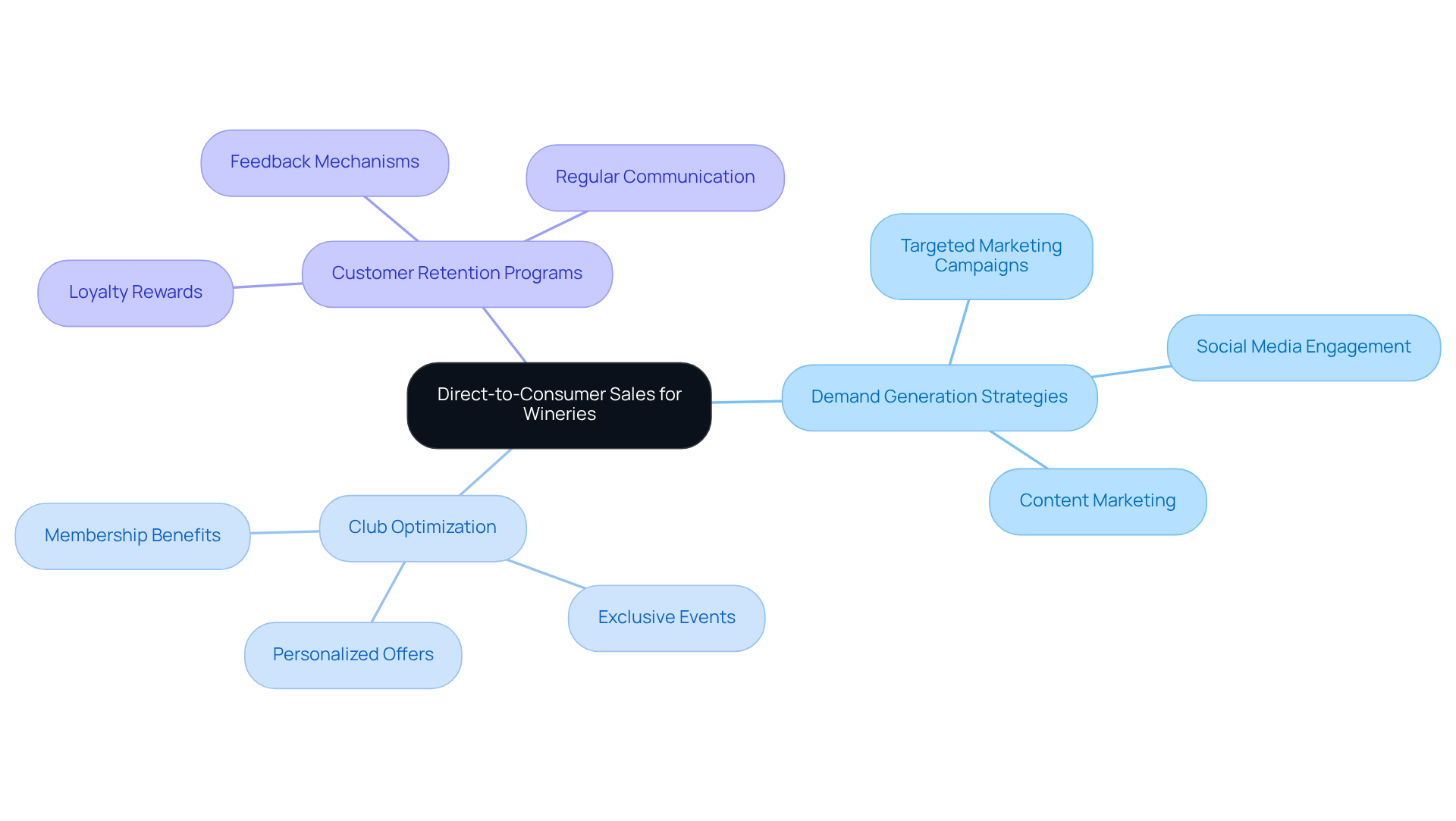
Learn About Different Wine Types: Red, White, Rosé, and Sparkling
For those who are new to wine, understanding the various types of beverages is the crucial first step in your exploration of wines.
- Red wines, crafted from dark grapes, are celebrated for their rich flavors and robust tannins.
- In contrast, lighter-colored wines, typically produced from green grapes, offer a refreshing and crisp experience.
- Rosé wines present a delightful blend of both, making them an ideal choice for warm days.
- Sparkling wines, such as Champagne, are carbonated and often associated with celebrations, adding a festive touch to any occasion.
Each type of wine possesses its own distinct flavor profile and optimal food pairings, making the journey of discovery both exciting and enriching.
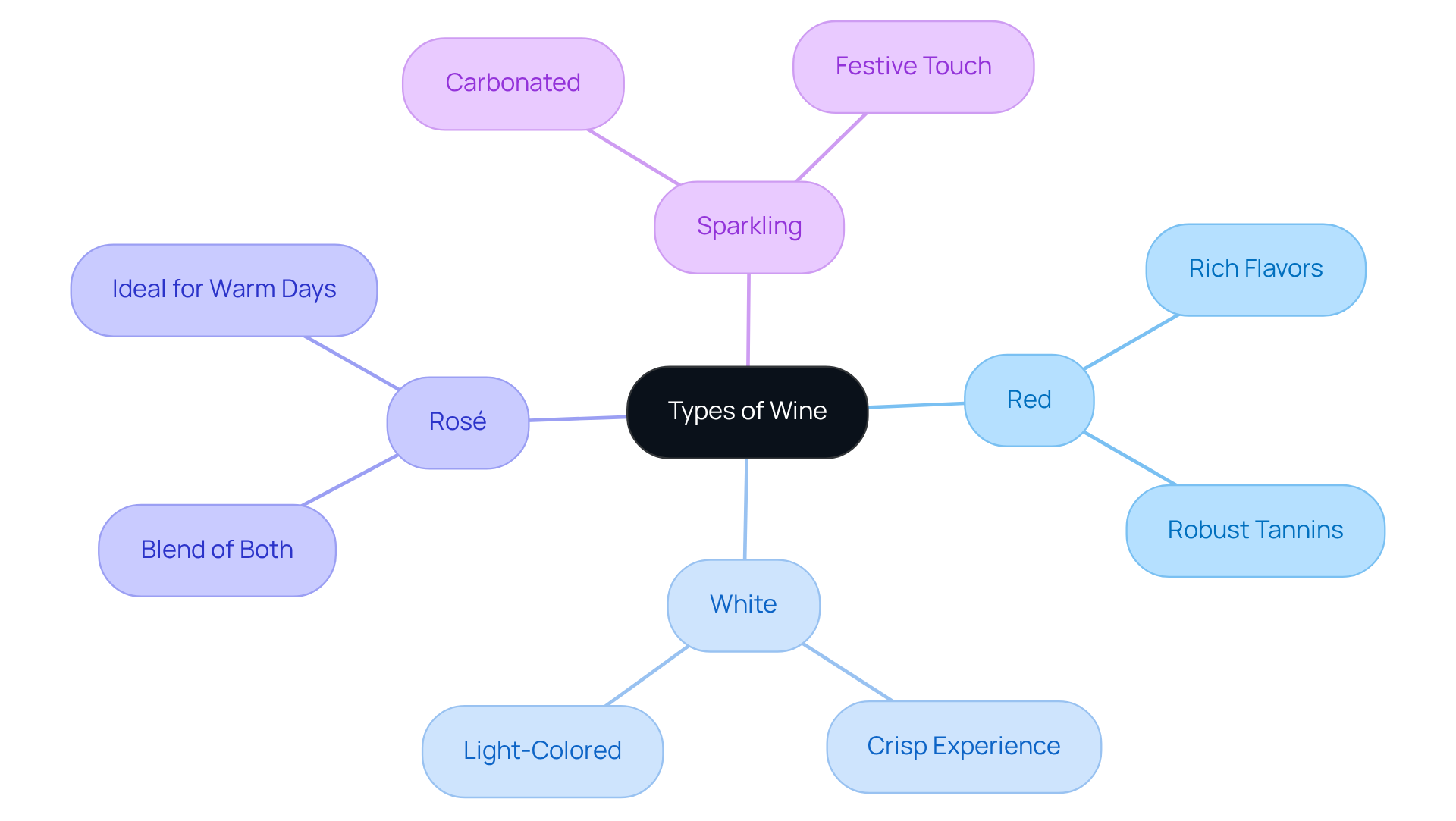
Master Wine Tasting Techniques: Swirl, Sniff, Sip, and Savor
To truly appreciate this beverage, mastering the five S's of tasting is essential:
- See
- Swirl
- Sniff
- Sip
- Savor
Begin with a keen observation of the beverage's color and clarity, which sets the foundation for your tasting experience. Swirl the glass to release the aromas, allowing them to envelop your senses. Take a moment to inhale deeply, preparing yourself for the tasting journey ahead. When you sip, let the beverage cover your palate, enabling you to discern its intricate characteristics. Finally, savor the finish, paying attention to how the flavors evolve and linger. Practicing these techniques will not only enhance your tasting abilities but also significantly enrich your appreciation of this beverage.
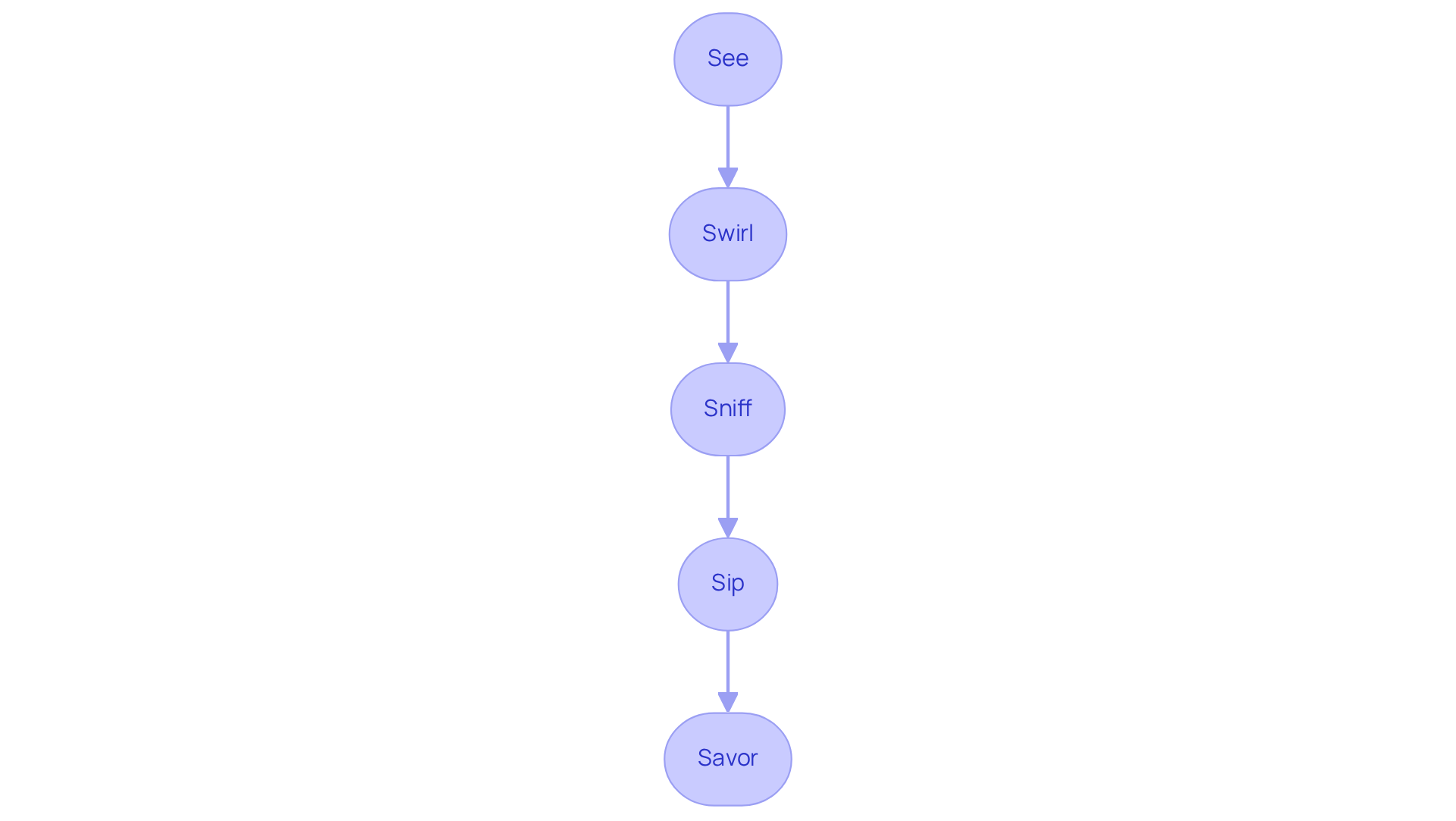
Pair Wine with Food: Discover Flavor Combinations
Pairing beverages with food significantly enhances your dining experience. Aligning the weight of the beverage with that of the food serves as a general guideline. For instance:
- Light white varieties harmonize beautifully with seafood and salads.
- Full-bodied reds complement hearty meals such as steak.
Additionally, consider the flavors present in both the beverage and the food:
- A fruity drink can elevate a dish with similar notes.
- A contrasting flavor may create a delightful balance.
This strategic pairing not only enriches the meal but also showcases your expertise in crafting memorable dining experiences.
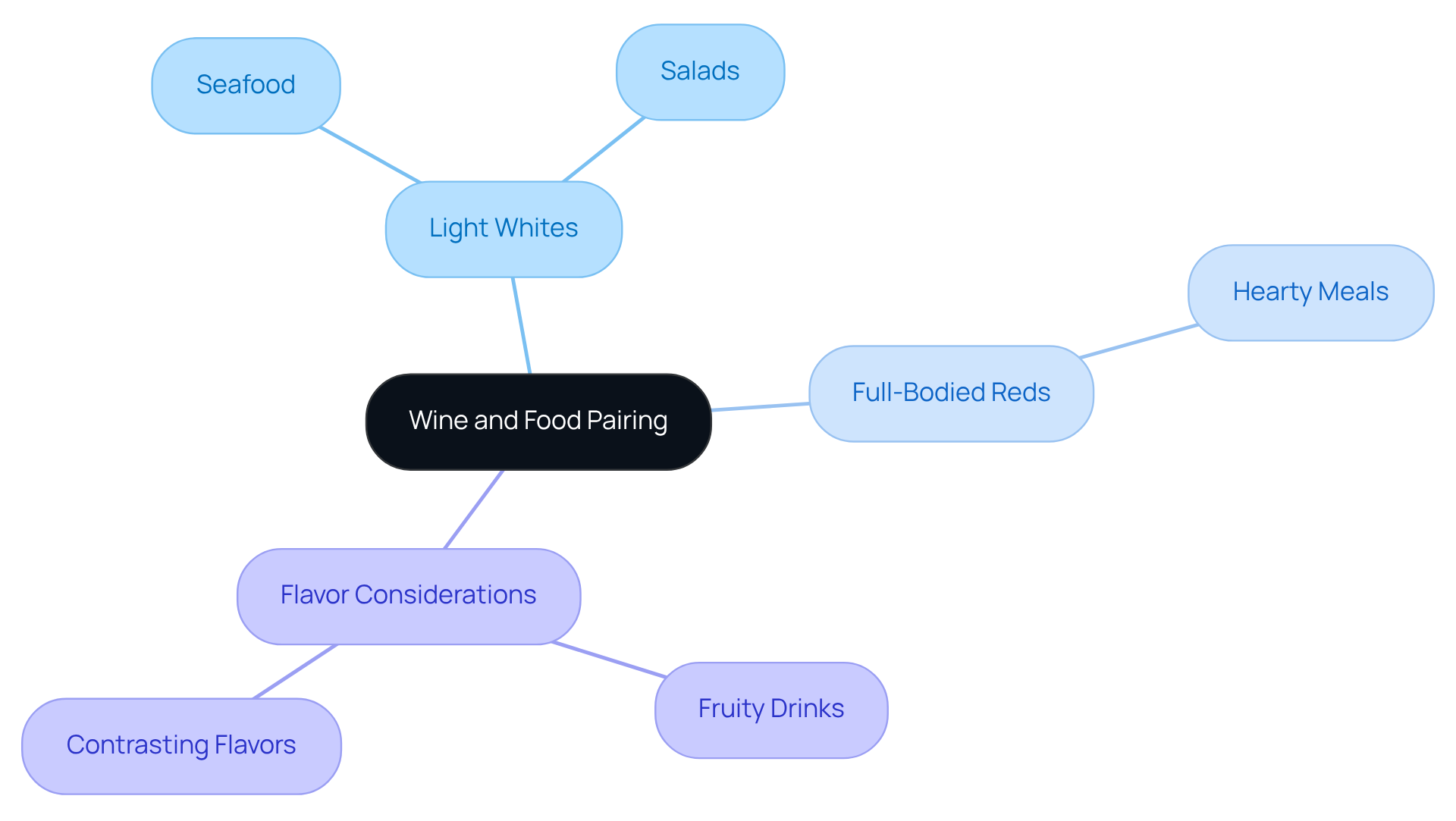
Store Wine Properly: Ideal Conditions for Aging
To preserve the quality of your beverage, it is essential to store it in a cool, dark location with a consistent temperature between 45°F and 65°F. Direct sunlight and vibrations can adversely affect the beverage—factors you must avoid at all costs.
Ideally, bottles should be positioned horizontally to keep the cork moist, which prevents air from entering the bottle. By adhering to these appropriate storage conditions, your beverage will mature elegantly, resulting in an improved taste and aroma.
Are you ready to elevate your beverage experience?
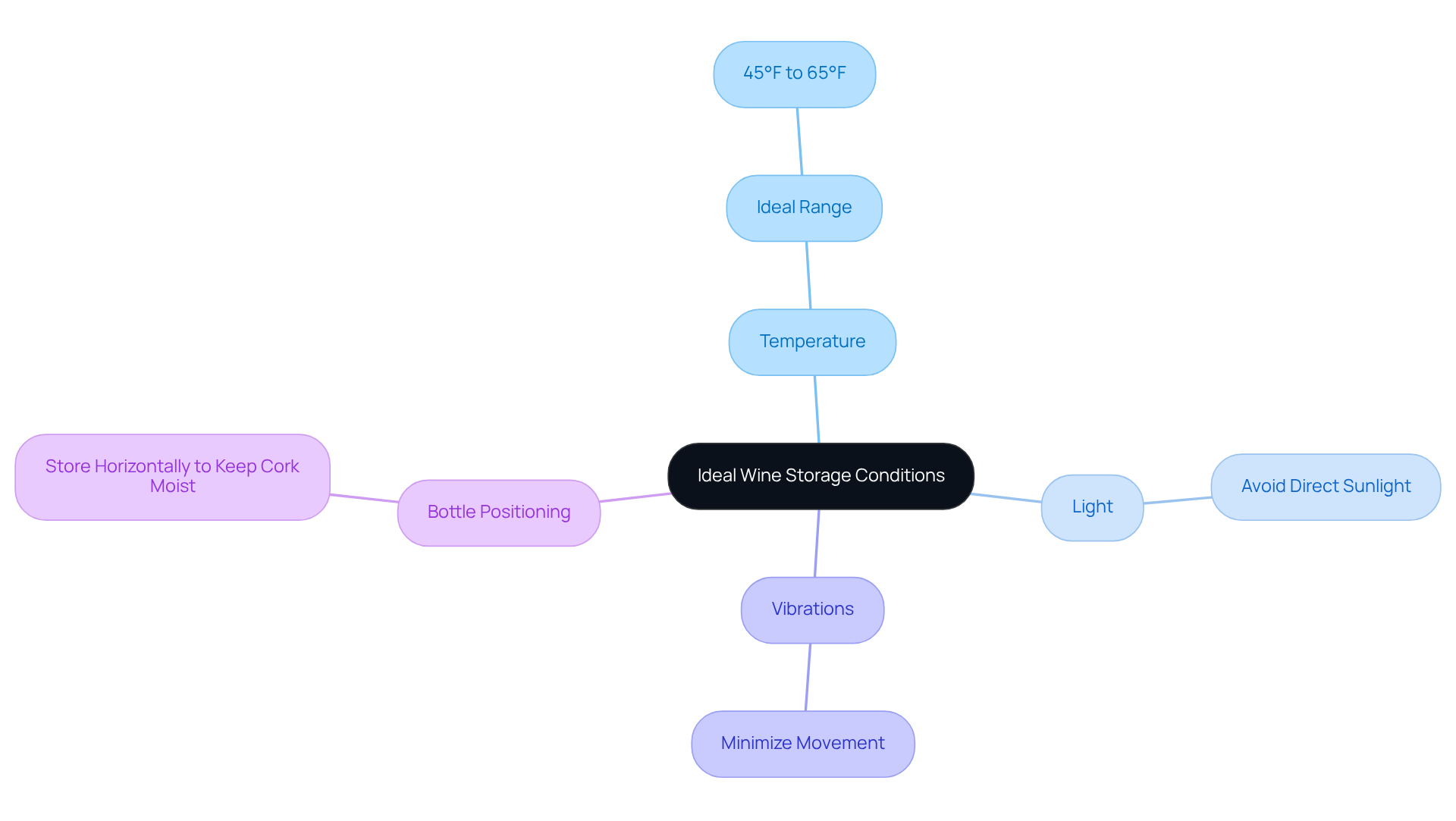
Explore Wine Regions: Understand Terroir and Its Impact
Regions around the globe each possess unique terroirs that significantly influence the flavor profiles of the beverages produced there. Terroir encompasses the soil, climate, and topography of a region, which collectively shape the characteristics of the drinks.
For example, beverages from cooler climates typically exhibit higher acidity and a lighter body, whereas those from warmer regions are often fuller and fruitier.
By exploring various grape-growing areas, you can deepen your understanding and enhance your enjoyment of the beverages you favor.
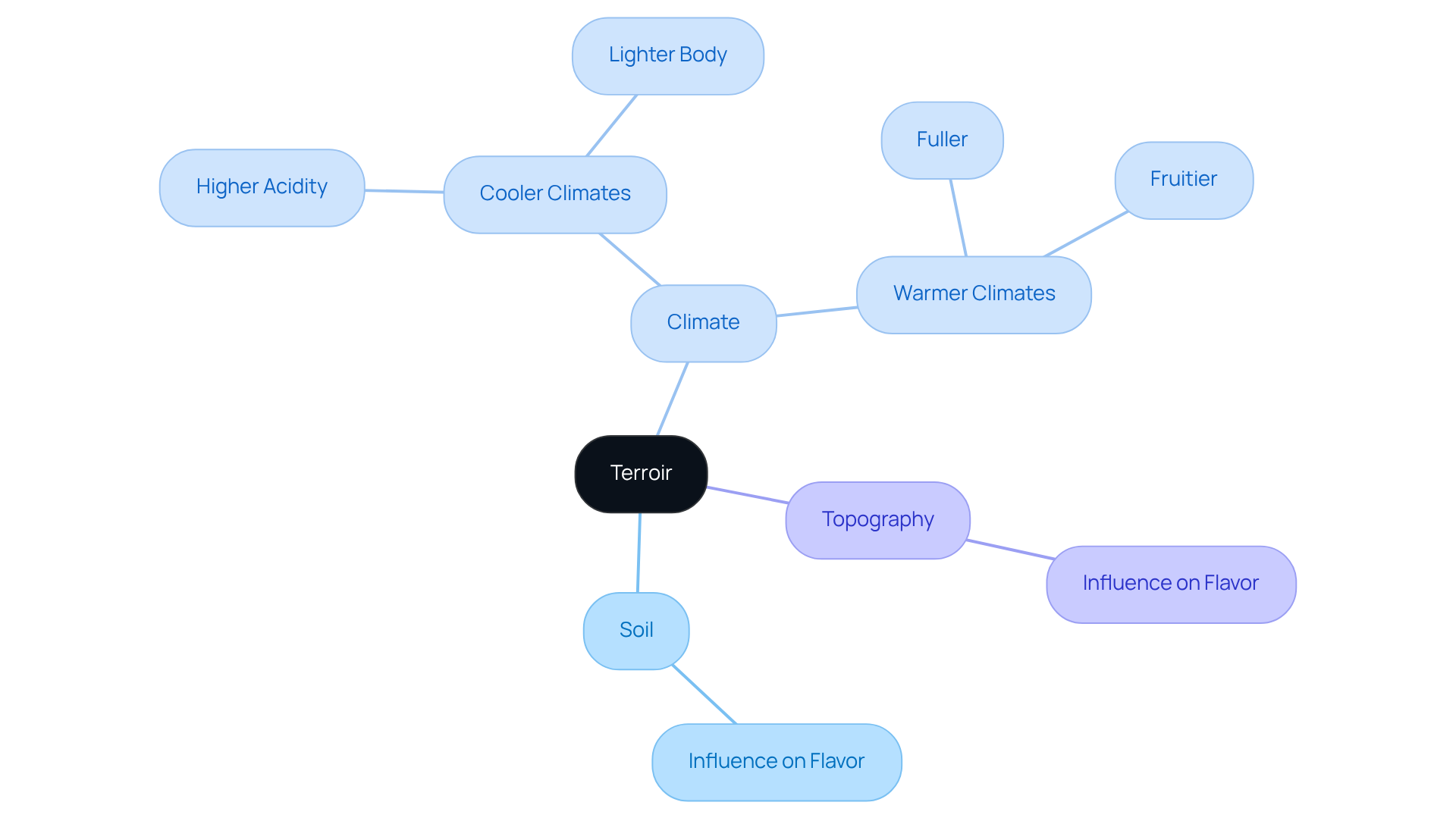
Follow Wine Etiquette: Tips for Social Settings
Wine etiquette significantly enhances your experience at events and social gatherings. To begin, always grasp your glass by the stem; this prevents the warmth of your hand from altering the beverage's temperature. When sampling, take small sips and truly savor the flavors, allowing each note to unfold. If you find yourself at a winery, it is not only courteous but beneficial to engage with the staff—ask questions about the beverages, and immerse yourself in their knowledge. Remember, pacing yourself is crucial; enjoy the experience, as tasting beverages transcends mere consumption; it embodies a rich social aspect that is as rewarding as the drink itself.
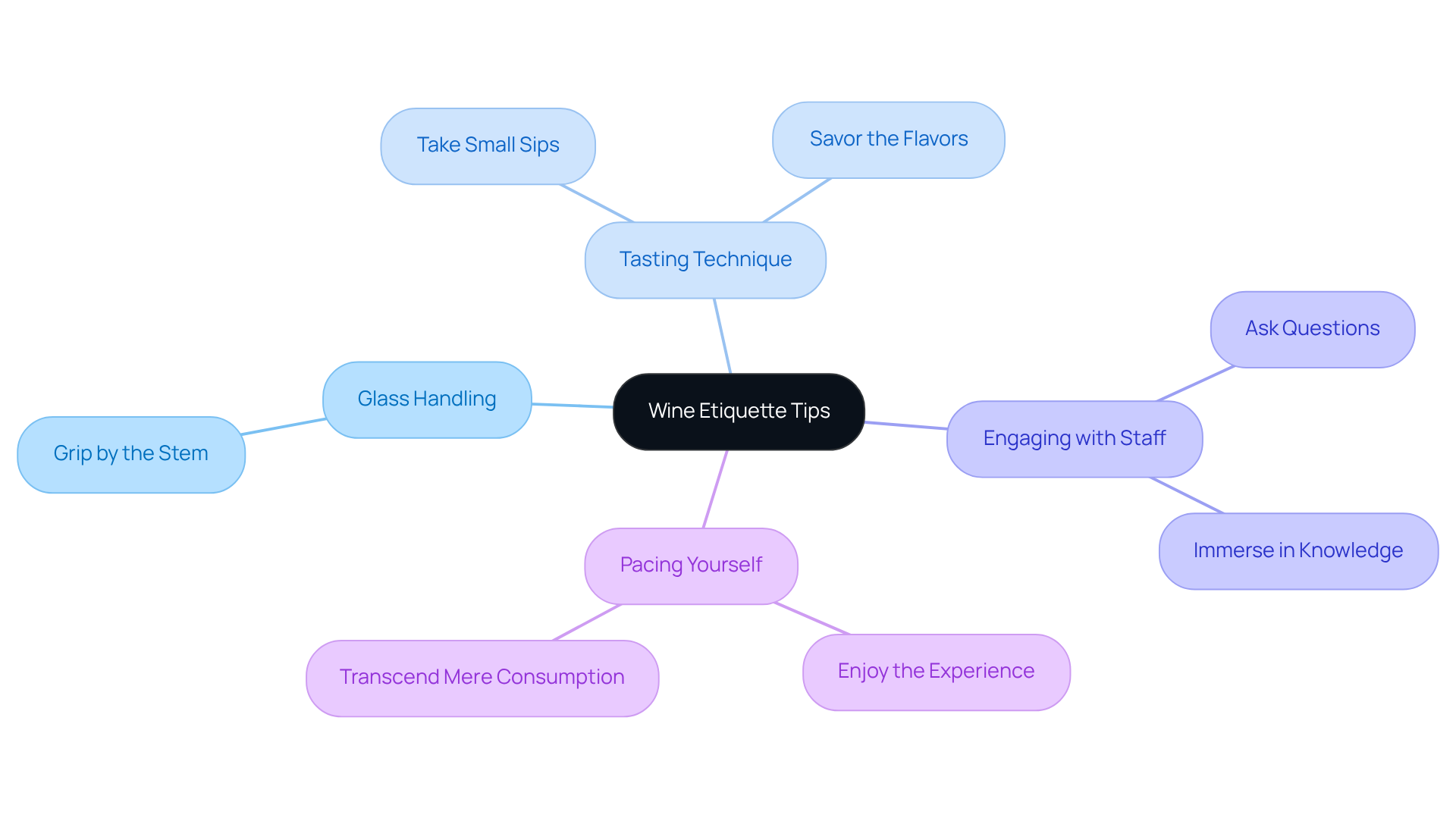
Decode Wine Labels: Know What to Look For
Wine labels provide essential information that can significantly influence your purchasing decisions. The key elements to scrutinize include:
- The producer's name
- The region of origin
- The grape variety
- The vintage year
For individuals who are new to wine, understanding these components is crucial for selecting wines that align with your flavor preferences. For instance, a wine from a prestigious region often indicates higher quality, while the grape variety can offer insights into the anticipated flavor profile.
By paying attention to these details, you can make informed choices that enhance your experience with wine, particularly if you are new to wine. Are you ready to elevate your wine selection process? Start by examining the labels closely and consider how these factors resonate with your personal taste.
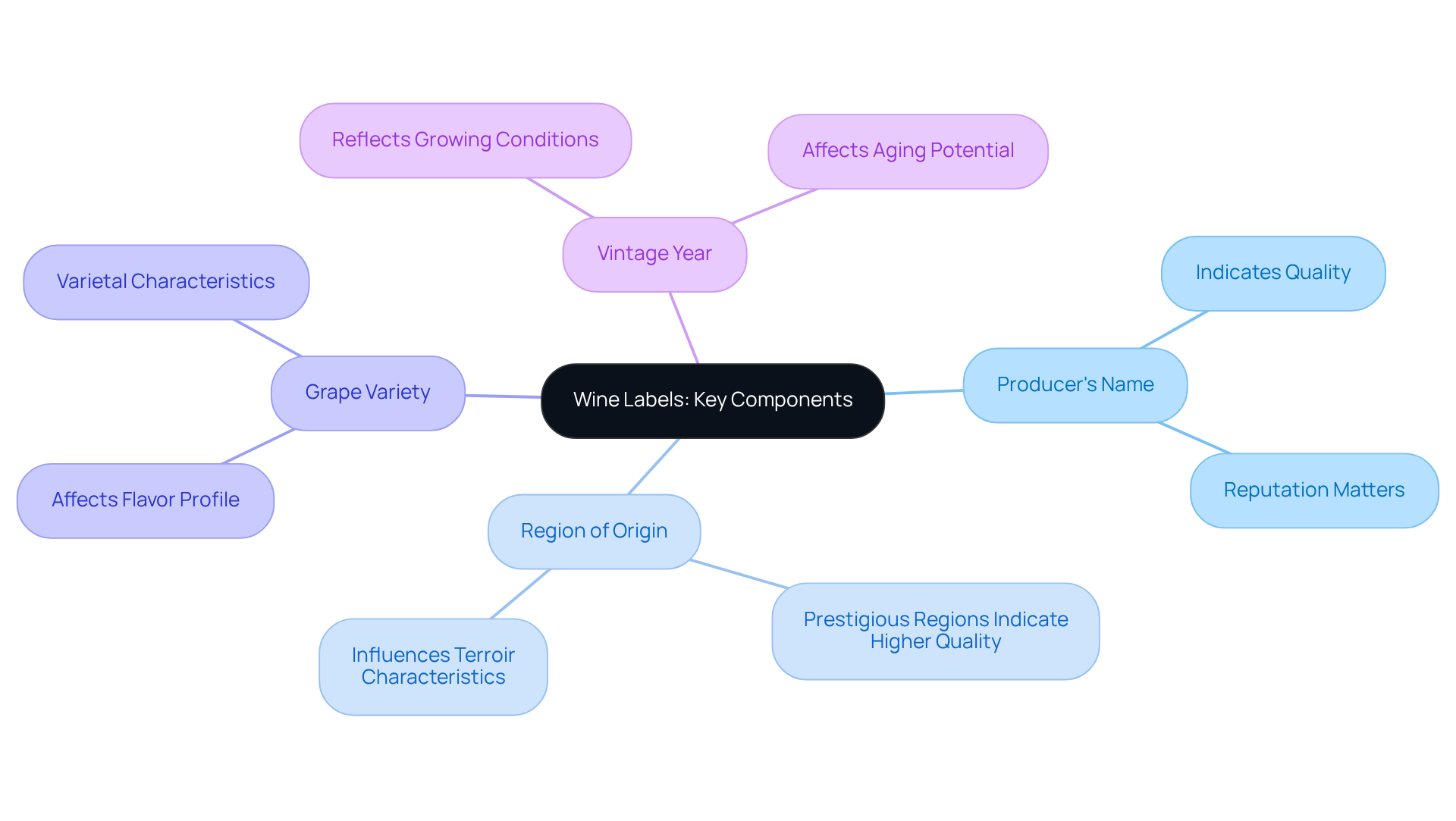
Join a Wine Club: Access Curated Selections and Education
Joining a beverage club is an exceptional way for those who are new to wine to elevate their knowledge and palate. These clubs provide curated selections tailored to your preferences, making them ideal for individuals who are new to wine, accompanied by insightful tasting notes and educational resources. This experience not only broadens your horizons but also introduces you to new varieties of beverages, especially for those who are new to wine.
Moreover, clubs dedicated to this beverage often grant exclusive access to limited editions and offer discounts, making them an invaluable asset for any enthusiast. Embrace the opportunity to deepen your appreciation for beverages, particularly if you are new to wine, and discover the unique offerings that await you.
Attend Wine Events: Expand Your Knowledge and Network
Engaging in events centered around beverages—such as tastings, festivals, and workshops—can profoundly elevate your experience. These occasions not only provide opportunities to sample a diverse array of beverages but also allow you to learn from industry experts and forge connections with fellow enthusiasts.
Have you considered how participating in discussions about beverages can deepen your understanding and appreciation? Furthermore, networking at these events can cultivate invaluable relationships within the wine community, ultimately enriching your overall journey.
Seize the opportunity to immerse yourself in this vibrant world and enhance your expertise.
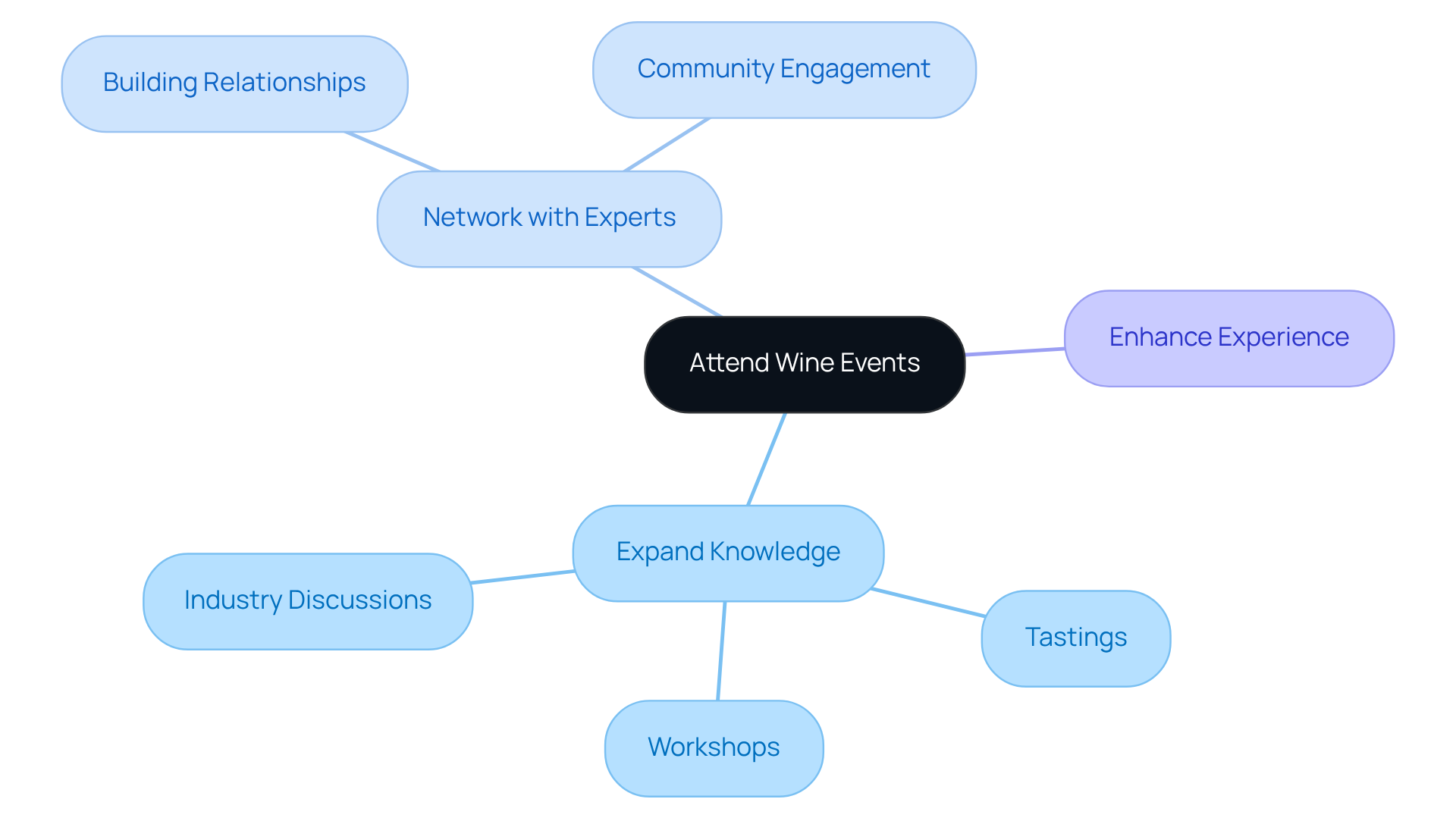
Conclusion
Embarking on a wine journey is not just an exploration of flavors; it is an invitation to immerse oneself in a rich and diverse world. Understanding the fundamental aspects of wine—ranging from the various types available to essential tasting techniques and proper storage methods—empowers beginners to cultivate a profound appreciation for this timeless beverage. This guide serves as a definitive starting point for anyone eager to delve into the complexities of wine and enhance their overall experience.
Throughout this article, we have shared key insights that underscore the importance of mastering tasting techniques, the art of food pairing, and the influence of terroir on flavor profiles. Furthermore, we highlighted the significance of wine etiquette, decoding labels, and engaging in wine clubs and events as vital components of developing a well-rounded wine knowledge. Each of these elements contributes to a more enriching experience, enabling newcomers to navigate the wine landscape with confidence.
Ultimately, the journey into wine transcends the drink itself; it represents an opportunity to connect with others, discover personal preferences, and savor the nuances of flavor and tradition. By taking the first steps outlined in this article, individuals can elevate their wine appreciation and immerse themselves in a vibrant community that celebrates the joys of wine. Embrace this adventure, and let your exploration of wine lead to delightful discoveries and unforgettable experiences.
Frequently Asked Questions
Why are direct-to-consumer (DTC) sales important for vineyards?
Direct-to-consumer sales are essential for vineyards as they help maximize revenue potential by allowing vineyards to engage directly with customers, forge stronger relationships, gather valuable customer data, and enhance brand loyalty.
What services does Enocap provide to family-owned vineyards?
Enocap provides comprehensive advisory services that include demand generation strategies, club optimization, and customer retention programs, all aimed at establishing robust DTC sales channels for vineyards.
How does Enocap help wineries grow their e-commerce?
Enocap employs proven strategies that facilitate significant e-commerce growth for wineries, transforming casual visitors into loyal customers through compelling narratives and deeper connections.
What are the main types of wine?
The main types of wine include red wines, which are made from dark grapes; white wines, typically produced from green grapes; rosé wines, which blend characteristics of both red and white; and sparkling wines, such as Champagne, which are carbonated.
What are the key characteristics of red and white wines?
Red wines are celebrated for their rich flavors and robust tannins, while white wines offer a lighter, refreshing, and crisp experience.
What is the significance of rosé and sparkling wines?
Rosé wines provide a delightful blend of red and white wine characteristics, making them ideal for warm days, while sparkling wines add a festive touch to celebrations due to their carbonation.
What are the five S's of wine tasting?
The five S's of wine tasting are See (observe color and clarity), Swirl (release aromas), Sniff (inhale aromas), Sip (taste the wine), and Savor (appreciate the finish and how flavors evolve).
How can mastering wine tasting techniques enhance the experience?
Mastering wine tasting techniques enhances the experience by allowing individuals to appreciate the beverage more fully, discern its intricate characteristics, and enrich their overall enjoyment of wine.




